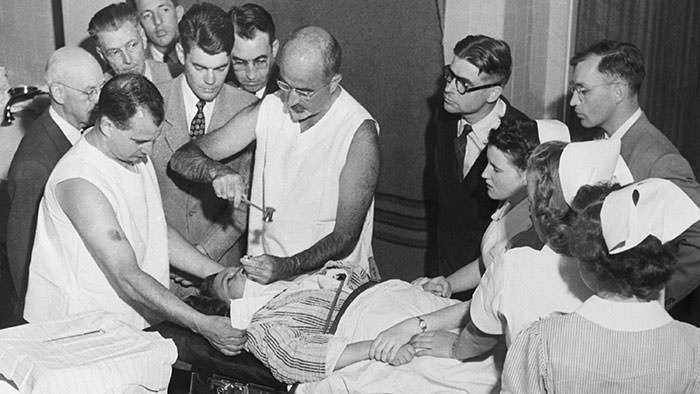
In the early 20th century, when options for treating mental illnesses were limited, a controversial and invasive procedure called lobotomy emerged. The procedure involved severing nerve pathways in the lobes of the brain, with the belief that it could alleviate symptoms of mental disorders. Despite a lack of concrete evidence supporting the effectiveness of lobotomy, it became widely used across the world.
The popularity of lobotomy can be attributed, in part, to active campaigning by its proponents and widespread misinformation in the media. Many people came to view lobotomy as a miracle cure for various mental illnesses, and thousands of patients underwent the procedure in the hope of finding relief from their symptoms.



The purpose of the lobotomy was to cut the tissue that connects the prefrontal cortex to the thalamus. Transorbital lobotomies are not guided or visualized in any way, so they basically cut blind into brain tissue. There is no mystery why a tiny slip can result in drastically different outcomes for different patients. They’re slicing the brain, but can’t see where they’re cutting.
Okay, I guess I just thought they could figure out more accurately where to sever the tissue, so that outcomes would be more consistent.
We do not fully understand the brain today, let alone 50 years ago. The damage to certain brain areas has wildly different effects in different patient groups, and dementia presents differently in different people. You can think of it this way: If the brain were a diamond, you would not wonder why it reflects light differently after cutting a hole in it. Do the same thing with another diamond, same shape, cut, and carat. Even a tenth of a millimeter off in that diamond will affect the way light reflects, and therefore the way the diamond appears. Brains are much more complex and larger than average diamonds.
A bit off topic, but if you are at all interested in the history of the procedure and its effects on those who have had it, I can recommend two books for you. My Lobotomy, a memoir by Howard Dully who received a transorbital lobotomy as a child, and The Lobotomist, a biography of Walter Freeman, the doctor who perfected the lobotomy. Near the end of his career, he performed Howard Dully’s lobotomy. They are both pretty quick reads.
It was used to treat people who were considered insane and unstable with lobotomies. A lobotomy removes the frontal lobe, which is partly responsible for personality, among other things. Get rid of the frontal lobe, and these people will stop being crazy. Some people considered lobotomies a success because they prevented crazy and unstable people from being crazy. It also prevented them from having almost any personality at all, among other things. Upon realizing this, lobotomies quickly lost popularity.
The procedure involves inserting a needle or sharp instrument through your eye socket in order to remove a piece of your brain that controls how its different parts communicate with each other. Prior to science realizing they were erasing people’s personalities, it was believed that it would cure mental disorders by basically turning you into a zombie incapable of higher cognitive thought.